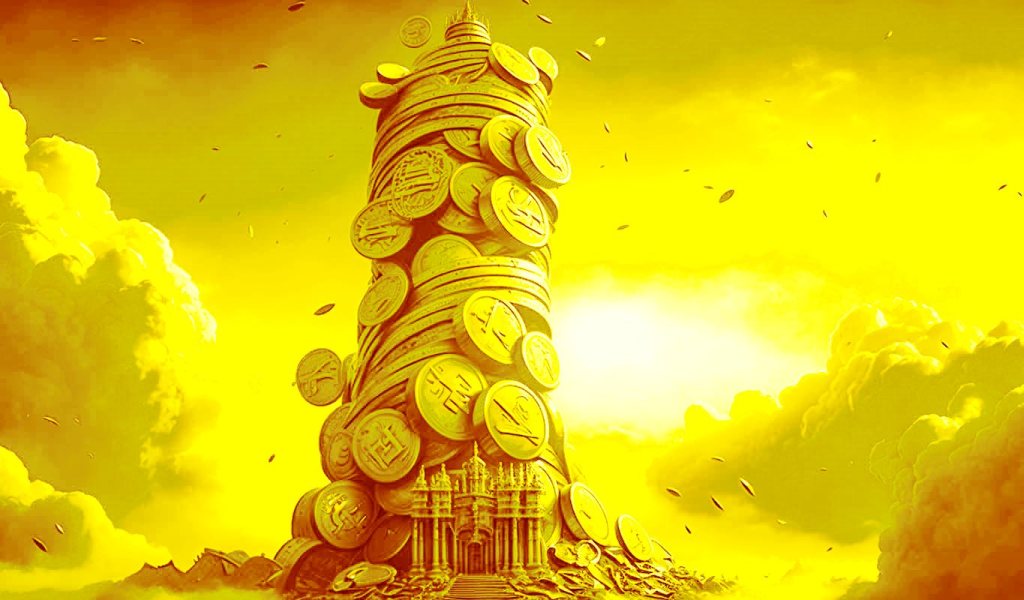
The head of the largest bank in the US says he’s concerned about “significant uncertain forces” brewing on the global stage. In the firm’s first-quarter earnings results, JPMorgan CEO Jamie Dimon says persistent inflation and new, violent conflicts are his two top concerns as Q2 begins. “Many economic indicators continue to be favorable. However, looking […]
The post JPMorgan Chase CEO Warns Inflation, Terrible Wars and Violence Are ‘Significant Uncertain Forces’ in New Outlook appeared first on The Daily Hodl.

3 key indicators are behind the prolonged bearish trend in Ether, and data fails to identify an immediate catalyst for a price breakout.
Ether’s price has been stuck below $1,920 for the past 16 days, which is especially concerning since the latest breakout attempt on May 6 lasted less than 24 hours. Excluding this brief price pump, Ether’s (ETH) journey below $1,920 was initiated on April 21, over 30 days ago.
One can likely blame the Ethereum network’s $8.80 average transaction fee for investors’ diminished appetite, but the macroeconomic environment has also played an important role. On May 22, JPMorgan Chase CEO Jamie Dimon said it is impossible to predict the outcome of the Federal Reserve’s monetary policy, designed to curb inflation.
As CNN reported, Dimon added:
“You’re already seeing credit tighten up because the easiest way for a bank to retain capital is not to make the next loan."
The uncertainty surrounding the United States debt ceiling standoff between Joe Biden’s administration and the U.S. Congress is the probable cause for the worsening sentiment among institutional investors toward cryptocurrencies. According to CoinShares’ latest “Digital Asset Fund Flows Report," outflows across digital asset investment products hit $232 million over the past five weeks.
Furthermore, there are two indicators that impact Ether’s price and signal reduced demand for its decentralized finance ecosystem, in addition to weak leverage buying activity from professional traders.
The Ethereum network’s limited processing capabilities have been causing high gas fees, which greatly reduces the demand for smart contract usage. For the past five weeks, the average transaction fee has remained above $8, although at first sight, no impact was felt.

The total value locked (TVL) in the network remained stable at 15.1 million ETH versus four weeks prior, but it is nearing the lowest levels since August 2020. As a comparison, the TVL on the BNB Smart Chain in BNB (BNB) terms was essentially flat in the same period, while TRX (TRX) deposits on the Tron network declined by 12%.
Ethereum has historically been the absolute leader in decentralized exchange (DEX) volumes, but it all changed in the week ending May 21.

The Ethereum network’s DEX market share drastically dropped from a 75.5% peak on March 5 to 22.3% on May 21. Meanwhile, BNB Smart Chain was the biggest beneficiary, growing to 61.1% from 5.6%.
The number of active addresses interacting with decentralized applications (DApps) is also in a slump. Over the last 30 days, the top 12 DApps running on the Ethereum network saw an 11% drop in active addresses, possibly reflecting investor dissatisfaction with the high transaction costs.

Ether quarterly futures are popular among whales and arbitrage desks. However, these fixed-month contracts typically trade at a slight premium to spot markets, indicating that sellers are asking for more money to delay settlement.
As a result, ETH futures contracts in healthy markets should trade at a 4 to 8% annualized premium — a situation known as contango, which is not unique to crypto markets.

According to the futures premium, known as the basis indicator, Ether professional traders have avoided leveraged longs (bullish bets) for the past four weeks. Moreover, not even the brief rally toward $2,000 on May 6 was enough to flip those whales and market makers into bullish sentiment.
In short, these three indicators signal bearishness — namely, the record-low DEX market share, the declining addresses engaging with DApps and a lack of leveraged buying demand.
Maybe investors were expecting some kind of announcement out of Ethereum inventor Vitalik Buterin’s appearance at Edcon 2023 in Montenegro, which wasn’t the case — the fact is there’s no imminent driver to justify a sustainable rally above $1,920 in the short term.
This article is for general information purposes and is not intended to be and should not be taken as legal or investment advice. The views, thoughts, and opinions expressed here are the author’s alone and do not necessarily reflect or represent the views and opinions of Cointelegraph.
This article does not contain investment advice or recommendations. Every investment and trading move involves risk, and readers should conduct their own research when making a decision.